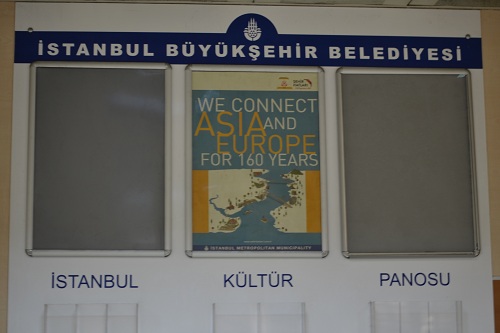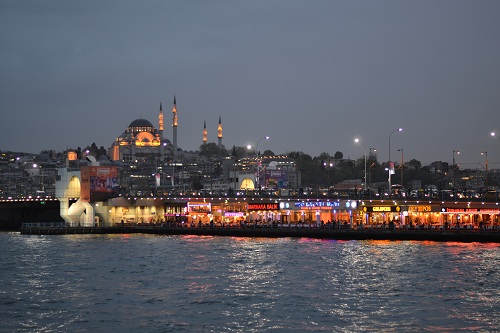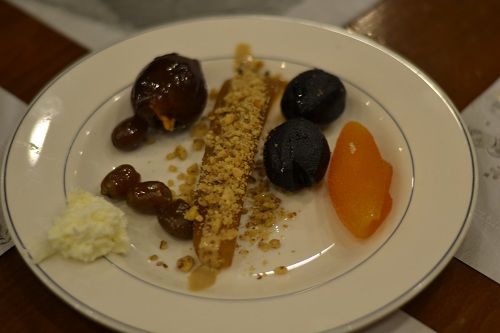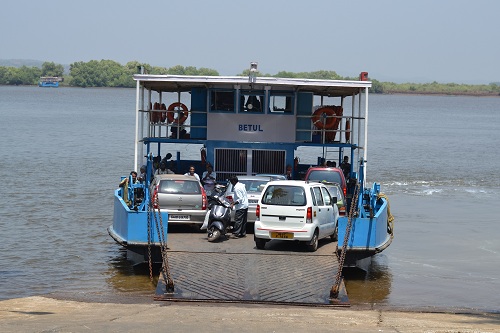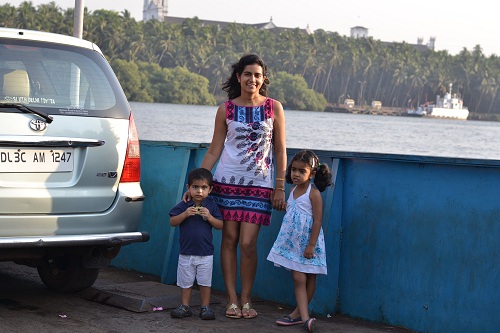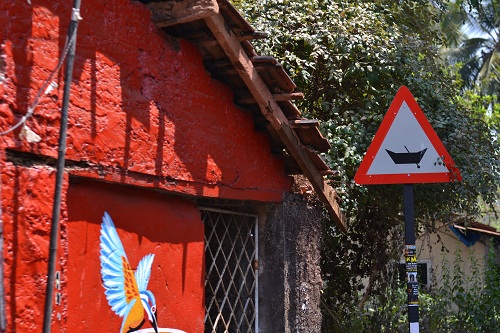Yesterday I wrote about how much the Turkish love kids. Today is Children’s Day, a holiday that originated in Turkey. We’ve seen posters advertising various children’s events to commemorate the occasion, but they have all been in Turkish and appear to cater to school age kids more than those as young as Ava and Kayan.
We were wrong if we thought we were going to be left out of the festivities. We were waiting to take the tram to the Grand Bazaar this morning when a heavily decorated tram approached the station. After telling everyone that the tram was not in operation, the conductor ran over and ushered us inside. At first we resisted – why would we be singled out from the platform to board this elaborately dressed vehicle? Before we could think, a hand reached out from inside the carriage and gave Ava and Kayan balloons. Then a clown popped his head out with a “Mehraba!” The kids were inside before we could react.
Turns out we were just in time for the Children’s Day party tram. The Istanbul transportation authority runs one just for kids and their families. Kids are the ticket to boarding this tram and those without children were left waving at us from the platform. The tram blasted children’s music and came complete with entertainment, balloons, puppets and miniature turkish flags.
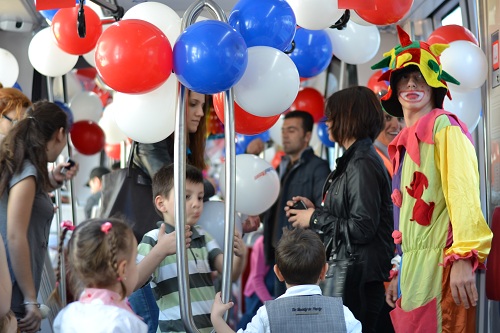
I can’t think of a better person to celebrate Children’s Day with than my cousin Keri who is visiting us from London. She knows so much about kids and their care that she was the one who taught us how to change Ava’s first diaper. In addition to being our go-to person for baby care, she knows how to show Ava and Kayan a good time. Some combination of the party tram and the company made Ava exclaim, “Mama, I love Istanbul!”
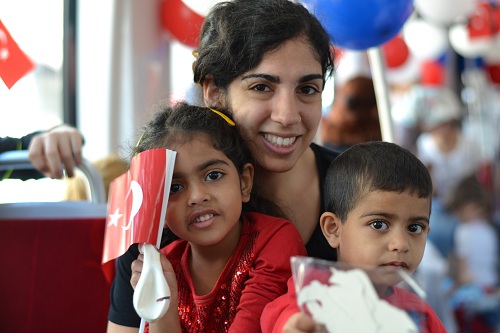
While we didn’t start the morning with the intention of celebrating Children’s Day, we were reminded quickly that it’s hard to escape anything that has to do with lavishing love on children in Turkey. We’re glad we caught the tram to another Turkish cultural experience.
